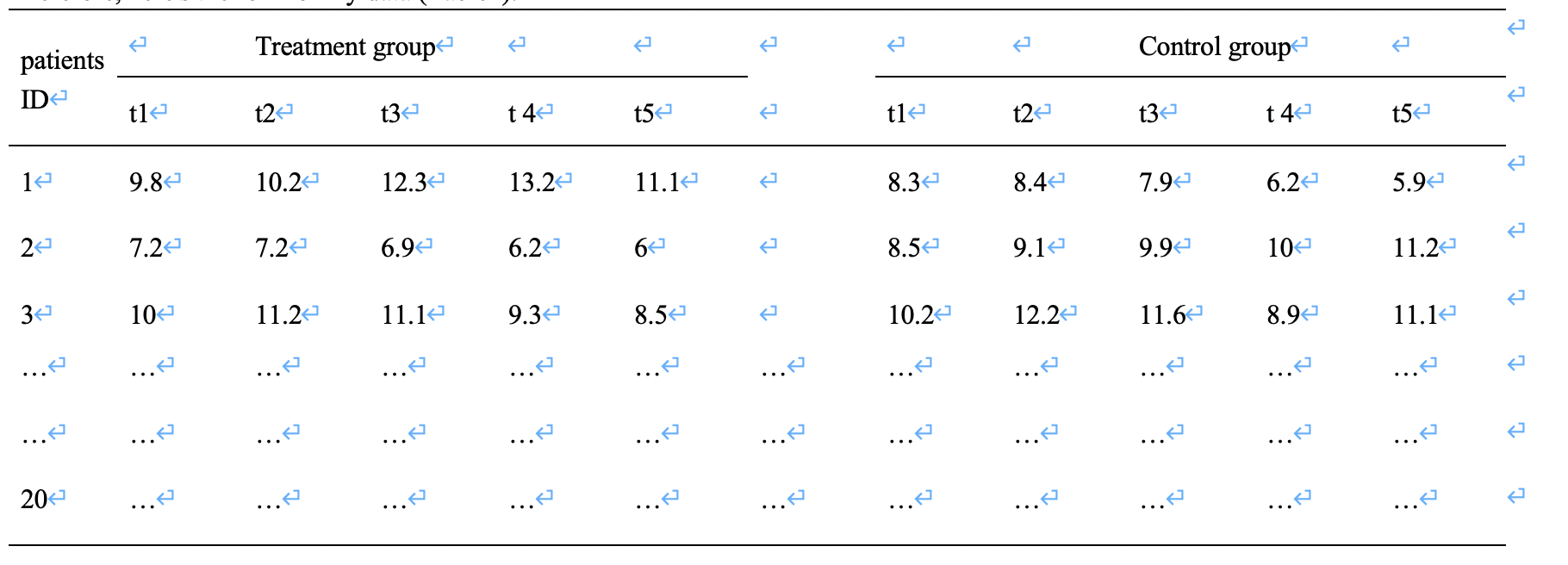I am doing a study to evaluate the effect of treatment on eyes. The purpose was to explore whether the level of X protein is different between treatment group (sick eye) and normal control group (normal eye).
Twenty patients were selected in our study and accepted the treatment for the sick eye.
After the treatment, for each patient, we tested the level of X protein in the treatment group (sick eye) and normal control group (normal eye) at 5 time point, respectively (1 month, 3 month, 6month, 9 month, 12 month).
Therefore, here's the form of my data (attached figure).
How to describe the design in the present study?
1、Two repeated measured factors design?
We think the time factor is a repeated measured factor, and the treatment factor is the other repeated measured factor. However, could the treatment factor be considered as a repeated measured factor? Because it only has two levels (Treatment group vs. control group).
2、The sick eye is selected in treatment group, the normal eye is control group.
Did it is a matched pairs design? And it is a matched pairs combine two repeated measured factor design?
So, which design it is?
How to conduct the analysis? Linear Mixed model or GLMM or Multilevel model?
Thanks a lot!

